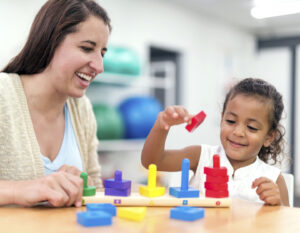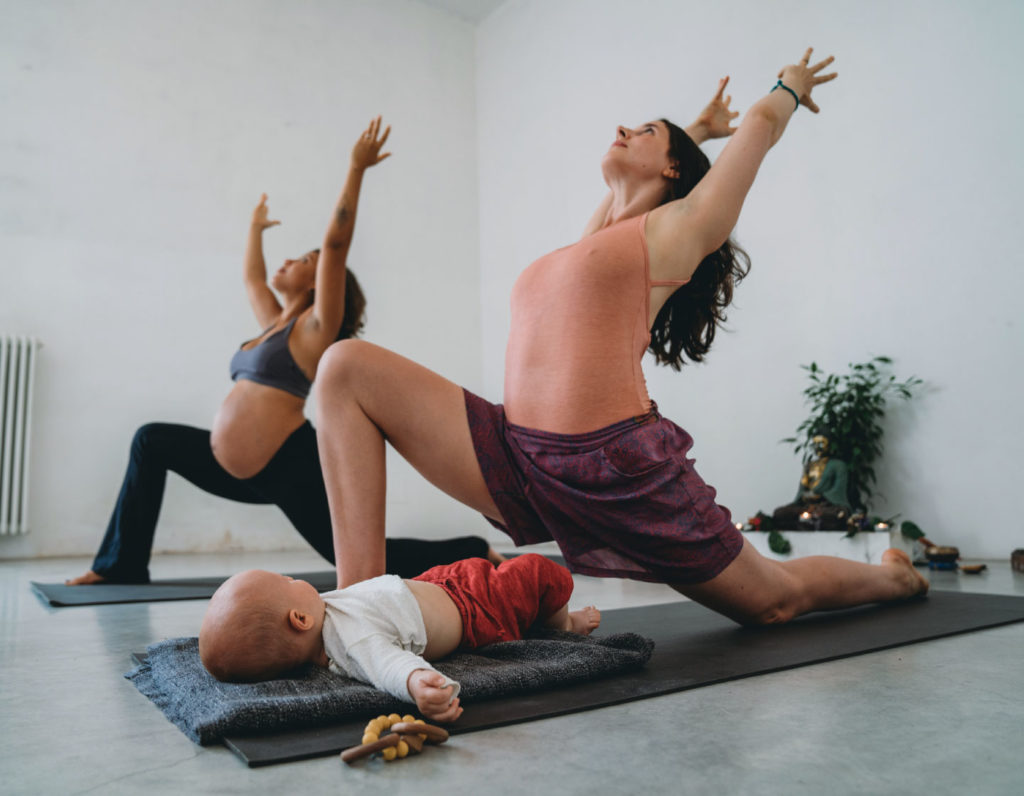

Your second trimester fitness goals sorted.
Are you a mama-to-be with a ton of questions about how to exercise over the next few months? If so, then you are in the right place. Our pre and postnatal exercise specialist is here to dispel common myths about training while expecting and to share some second trimester exercise routines that are safe for both you and your baby. If you are still in the first few weeks or months of your pregnancy, or are new to exercising while pregnant, then read the first in this series for advice and tips on safety: Pre And Postnatal Fitness Part 1: Safe Exercise For The First Trimester.
Your second trimester is going to bring a bunch of changes to your body. Some of these will make training easier, and some of these will make training harder. Nonetheless, with the right kind of planning and the correct modifications, you can make your exercise safer and more effective throughout this whole period.
There are four areas you should concentrate on during your second trimester (click below to jump to the relevant exercises).
Plus, check out our additional safety information with things to watch out for, along with two second trimester exercise programmes.
Read more: 9 Health And Wellness Apps For Busy Hong Kong Mums
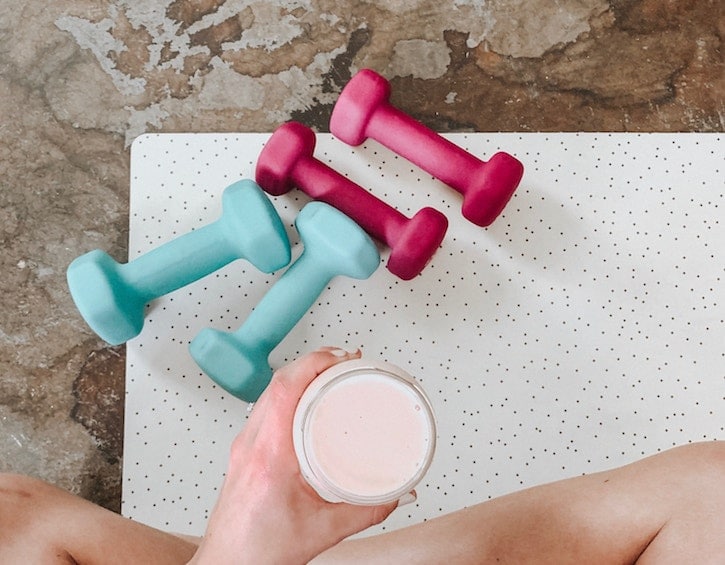

1. Second trimester exercise for your back and posterior chain
Your bump is growing fast, so it’s no surprise you’ll start feeling the extra weight in your back. It’s common for mums to round their shoulders in what we call a kyphotic position. This leads to all kinds of muscle imbalances down the road in your shoulders and your neck area. If you ever feel like you’re walking around with your shoulders hunched and your head sticking out like a turtle from its shell then you’re probably in a kyphotic position.
Further down your back, mamas might experience a condition called lumbar lordosis – a fancy name to say that your spine is curving more than it naturally should. This exaggerated curve is the primary source of the lower back pain that around 50% of pregnant mums experience.
Doing the right kind of second trimester exercise can help with stabilising your shoulder blades, reducing the curve of your back and supporting better posture. This will be your top priority when it comes to reducing your back pain. Strengthening your back also creates more space to allow your baby to align above your pelvis, and potentially also reduces the size and the effect of diastasis recti (meaning the space between your left and right abdominal muscles has stretched). Second trimester exercises that will help strengthen your back and posterior chain are:
Band Pull-Apart
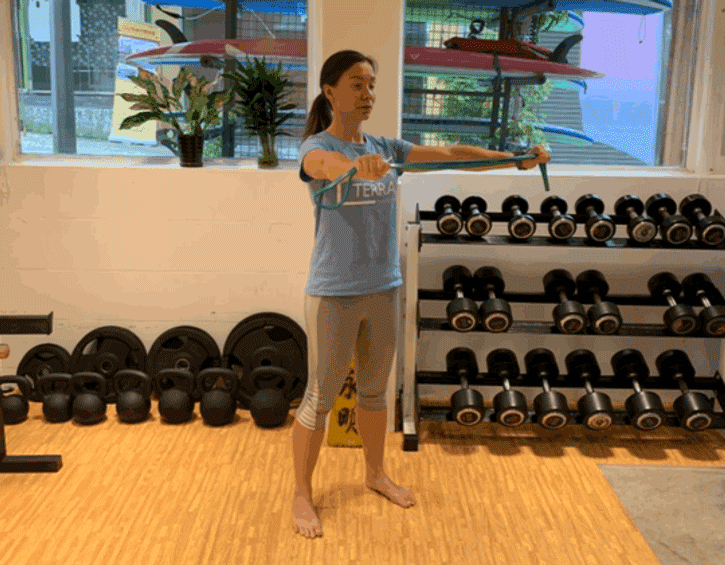

Cues:
- Hold your resistance band shoulder width apart with palms facing down.
- Stand with your feet hip width apart and check your posture. Pull your rib cage down so that your back is not arching backwards.
- Extend your arms out in front of you.
- Imagine there’s a pencil placed vertically between your shoulder blades.
- Pull the band apart horizontally while thinking about squeezing this imaginary pencil.
- Check that as you move your hands apart your chest isn’t moving towards the band. The band should be coming towards you.
Tips:
I’m using both strands of the resistance band in the GIF, but if there’s too much tension in yours and you’re struggling to pull it apart, try using one strand only.
Kneeling Bridges
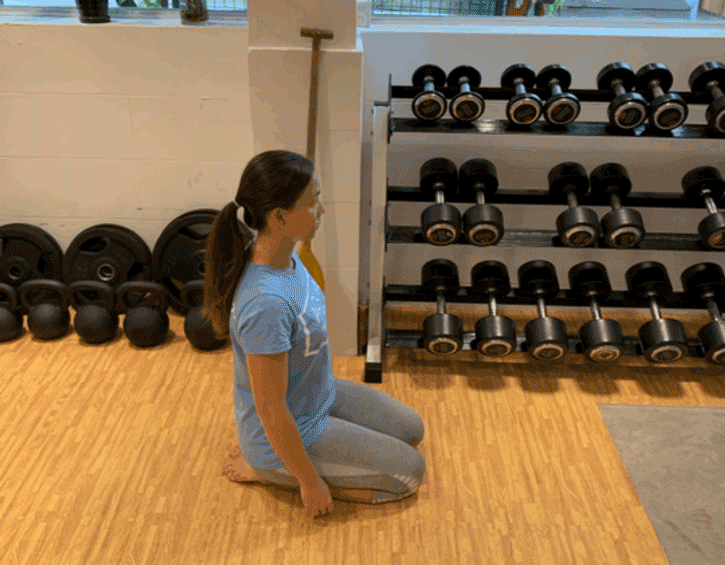

This exercise can be done using your own body weight, or with a dumbbell or kettlebell held in front of you:
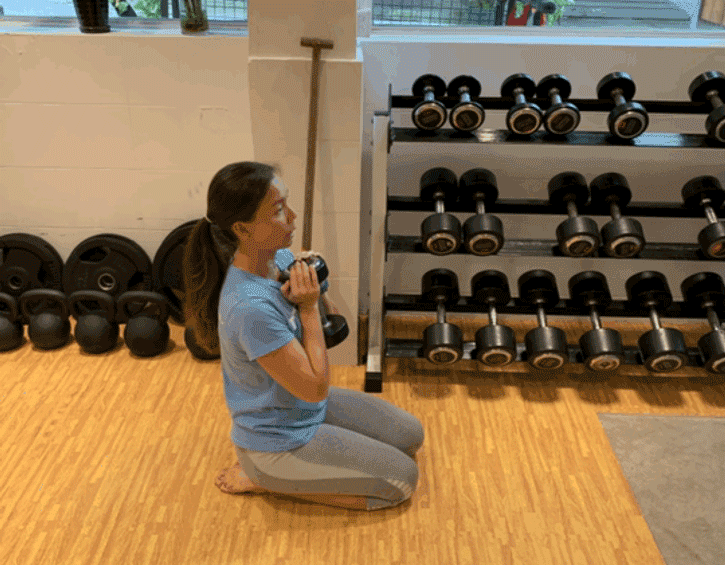

Cues:
- Get on to your knees and sit back on your heels. If this feels uncomfortable you can tuck your toes under you.
- Inhale.
- Exhale while you lift your hips off your heels.
- Stop when you come up on to your knees.
- Squeeze your glutes at the top.
- Inhale while you return to your seating position. Do this by sending your hips back and resting back on your heels.
Tips:
Resist the temptation to arch your back and to fire your hips beyond your knees, especially when you are tired. Instead, try to maintain good posture throughout the movement.
Romanian Deadlift
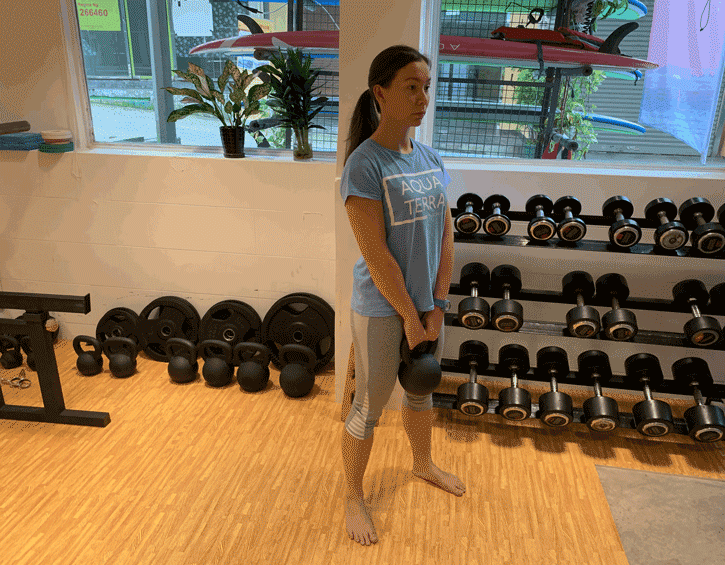

Cues:
- Stand behind a kettlebell with feet shoulder width apart (if you have a big baby bump then stand with your legs further apart). The kettlebell should be within reach when you bend over to pick it up.
- Hinge your body at the hips, and bend your knees to pick up the kettlebell.
- Exhale while lifting the kettlebell off the floor. Do this by squeezing your glutes and bringing your hips forward.
- The kettlebell should travel in a straight path upwards. You don’t need to engage your arms to pull it further upwards. This exercise is all about working your back and posterior chain.
- Once you are at the top of the deadlift, start to inhale and begin to lower the kettlebell again by hinging at the hips and softening your knees.
- Stop lowering the kettlebell when it reaches just below your knees in order to set up for the next lift.
Tips:
This is an advanced compound movement and it puts a lot of load on your lower back if you do it wrong. Don’t use heavy weights until you are confident that you have the right technique. If you are not familiar with deadlifts and free weights, then I would strongly recommend finding a qualified pre and postnatal personal trainer to introduce you to the movement. We understand the changes your pregnant body is going through and can make sure that you are getting it right each step of the way. When hinging your body up and down, remember to keep your spine neutral, knees soft and shins vertical.
Standing Bent Over Row
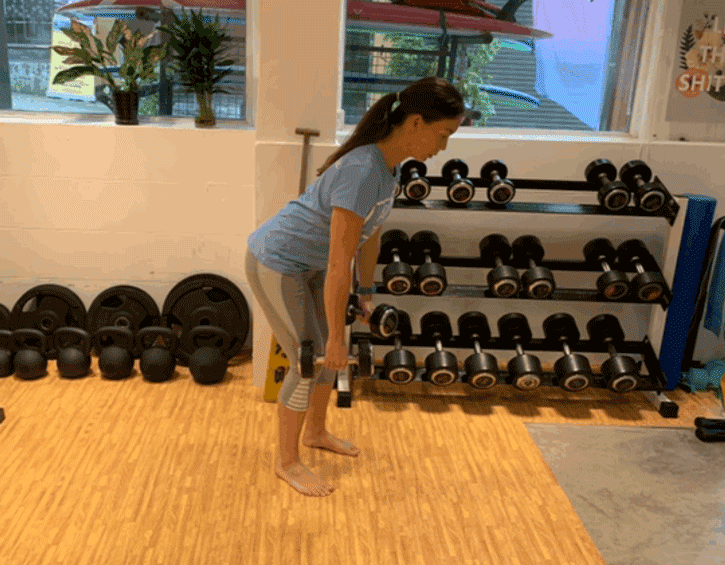

Cues:
- Hold a dumbbell in each hand with your palms facing towards your body.
- Stand with your feet shoulder width apart (further if you have a large baby bump).
- Bend your knees slightly and hinge your torso forward from your hips. Maintain a neutral spine so that your shoulders are not hunched over and your back is not arching.
- Inhale while you extend your arms downwards until they are straight.
- Exhale while you lift the dumbbells back to their starting position.
Tips:
Keep an eye on that spine. Really make sure it isn’t arched but feels like a flat stable tabletop.
2. Second trimester exercise for your core and pelvic floor
It’s always important to exercise your core and pelvic floor during pregnancy. These are a hugely important set of muscles, which help to improve your posture and provide support for your internal organs. Working your core in the right way may also reduce the size and the severity of diastasis recti, and having a core that is strongly connected with your pelvic floor will help when giving birth and recovering from birth too. Exercises that will help strengthen your core in your second trimester are:
Plank drags
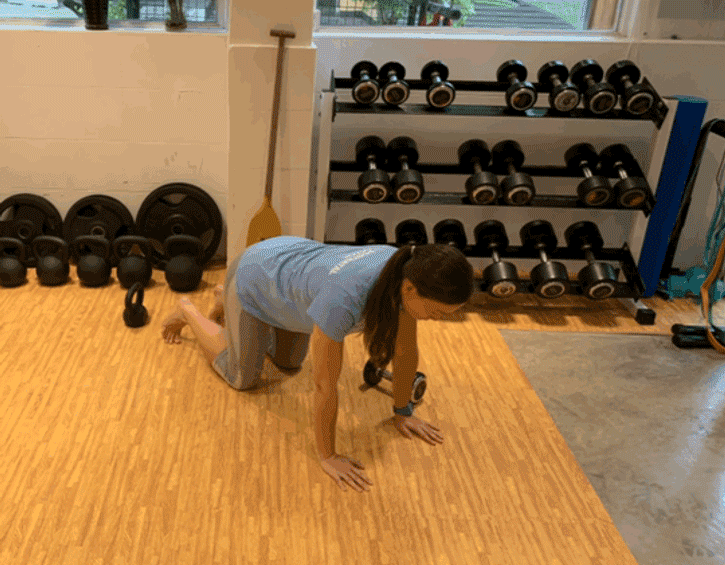

Cues:
- Set up with a dumbbell within reach.
- Get on all fours on a tabletop position. Your knees should be below your hips, and your hands should be under your shoulders (use a yoga mat to cushion your knees if required).
- Place the dumbbell behind your right hand.
- Use your left hand to pick up the weight, and then drag it along the ground across to your left side.
- Put your left hand back down to support yourself.
- Use your right hand to pick up the weight, and then drag it along the ground across to your right side.
Tips:
Keep your back flat, even as you drag the weight. Don’t arch, twist or let your shoulders drop. Also, make sure that you drag the weight in a straight line from behind your left to your right and vice versa. This will make the movement a lot easier and less awkward, as you don’t need to shift around to reposition yourself.
Pallof press
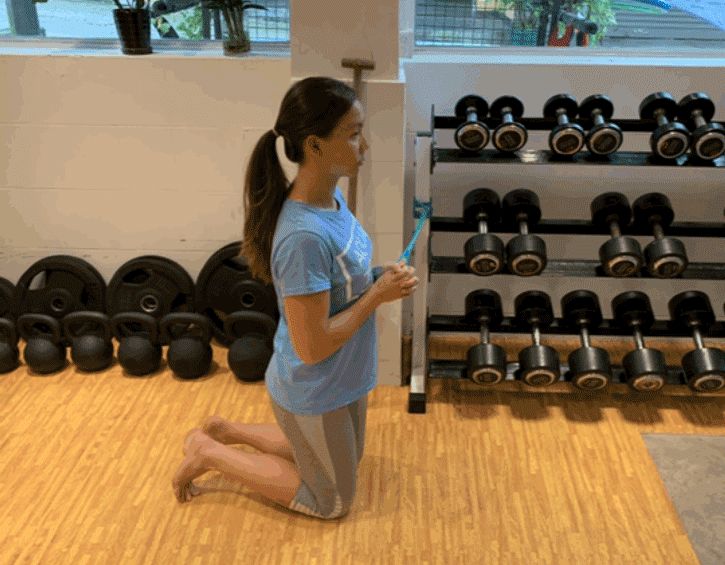

Cues:
- Get into a tall kneeling position with a resistance band handy, and something sturdy you can loop it around within arm’s reach.
- Loop the resistance band around the object at around chest height.
- Grip one end of the band with both hands and then shuffle a foot or two away from the object to create tension on the band.
- Pull the band close into your chest while making sure that your body is level and upright.
- Hold your arms out for one second before bringing them back towards the body.
- Repeat on both sides of the body.
Tips:
This exercise can also be done using a cable machine. Just set the cable to shoulder height and repeat the same steps as above. It’s all about engaging the core, so make sure you are feeling the tension in the band and that you are preventing your body from being pulled over to one side.
Pelvic Contraction and Relaxation Sequence
This pelvic contraction and relaxation sequence is a crucial exercise that will help strengthen the connection between your core and pelvic floor throughout pregnancy. Treat this less like breathing and more like a second trimester exercise.
- Get comfortable sitting cross legged or on an exercise ball. Relax, but make sure that you are sitting with good posture and not slouched forward.
- Imagine you have a balloon inside your torso or your trunk. When you inhale, the balloon is going to fill and hit four points: your diaphragm, your pelvic floor, your abdominal wall and your back. If we were to draw out these four points, the diaphragm would be at the top, the pelvic floor would be at the bottom, the abdominal wall would be on one side and the back on the opposite side. Also, imagine that as this balloon inflates it’s going to push down, open and relax your lady parts.
- When you exhale, imagine contracting your lady parts back in and up. Imagine that the four points we mentioned before are going to come together again.
It’s often hard for you to assess exactly how effectively you are contracting and relaxing your internal muscles, and it won’t happen overnight. If you can, I highly recommend you find a physiotherapist or personal trainer experienced with prenatal fitness to make sure you are headed in the right direction.
3. Second trimester exercise for your legs
Training your legs during your second trimester has a variety of real advantages. First, exercises like squats which target your legs also help to strengthen your glutes and your posterior chain. As we discussed earlier, having a strong posterior chain creates better posture, and better posture reduces lower back pain. Your legs are also going to be critical during the birthing process, and so strengthening these is always a good thing. I recommend this leg exercise during your second trimester:
Offset Front Rack Squat
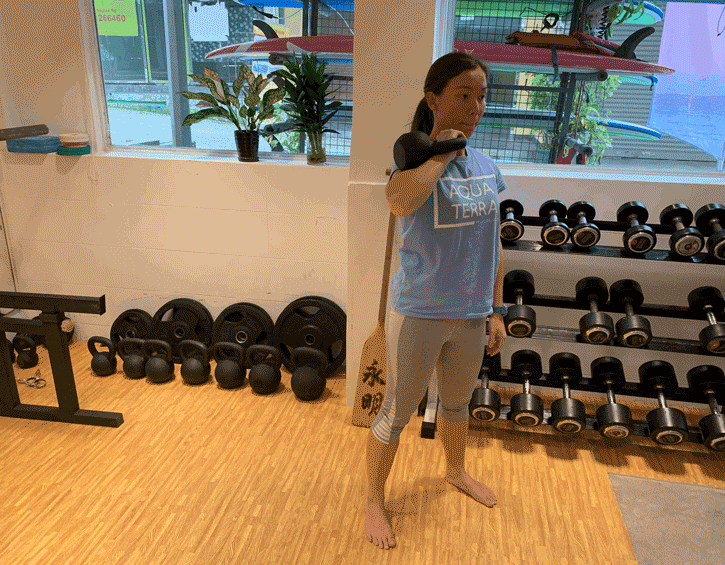

Cues:
- Set up with your feet hip width apart (or wider if you have a big bump!).
- Pick up a light dumbbell in your left hand and hold it in front of your chest with your elbow tucked in close by the side of your ribcage.
- Imagine you are going to sit down on a chair behind you. Hinge your body back at the hips and bend your knees. Don’t let your knees go past your toes.
- Once your thighs are parallel to the ground you can begin to reverse the movement.
- Exhale while pushing off the ground and getting back into your standing starting position.
Tips:
If you are new to this movement, drop the weight and practice getting into the squat by setting up with a chair behind you and sitting down on the chair. Use this as a cue to initiate the hip hinge and knee movement. On the other hand, if this is too easy, you can try replacing a dumbbell with a kettlebell and holding it in a “front rack” position.
4. Second trimester cardio
During your second trimester, your body starts pumping more blood around your system than normal. Your heart rate increases and your red blood cell count soars. Your body responds to this change in several ways that are super relevant to exercise. First, your blood vessels widen, increasing the risk of getting varicose veins. Second, you may notice swelling in your hands and feet, which we call edema. Finally, you may feel more breathless, and you might also get dizzier more easily than you normally would. Cardiovascular exercise can help. In fact, the American College of Obstetricians and Gynecologists specifically recommends regular exercise to ease swelling, soreness and prevent varicose veins from getting worse.
Just remember that you may be prone to dizzy spells and you may feel out of breath faster than you normally would. So don’t push it too hard. If you weren’t a runner before you got pregnant, now is not the time to start long or strenuous runs. Even if you were a runner, triathlete or weekend warrior, it’s best to keep the cardio intensity to a level where you wouldn’t feel out of breath even if you were chatting away with your best friend while doing your exercise.
Read more: 5 Reasons Why You Should Add Weight Training To Your Workouts
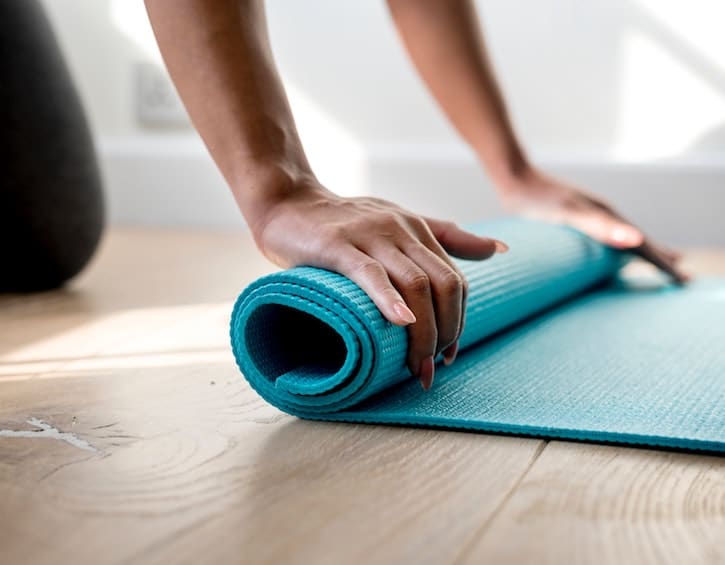

Things to watch out for in your second trimester
We’ve already talked about dizziness and breathlessness, but there are some other things you need to watch out for while doing second trimester exercise:
Loose Parts
Your body will start to relax your joints in preparation for the birthing process because having a more pliable pelvis will make pushing out your baby easier. On the flip side, having super relaxed joints can increase your risk of muscle sprains and strains.
But, don’t let this stop you working out altogether. If you do the right exercises with the right form then you bring the chance of injury down again. Your second trimester isn’t about trying to achieve a personal best in your weights program. Instead, slow down and focus on technique instead.
Lying on Your Back
As your baby grows, lying on your back could become more of an issue. This is because the weight of the baby can put pressure on a major artery and block blood flow from your lower body to your heart. However, there is mixed advice on when to stop lying on your back. Some say not to lie on your back after 16 weeks, and others like Sports Medicine Australia say after 28 weeks.
The safe and sensible approach is not to lie on your back if you ever feel light-headed, a tingling in your legs, or any other general discomfort. If you’d still like to perform exercises where you are lying on your back, then simply perform them lying on at least a 15-degree incline.
Round Ligament Pain
If you notice a sharp pain or a dull ache between your stomach and groin when standing up or getting out of bed, you might have round ligament pain. This is when the ligaments in your swollen uterus get a little cranky and overstretched.
Like any other abdominal pain, it’s safest to speak to a health professional first in order to get a full and thorough diagnosis. But if you have been diagnosed, I would recommend the cat-cow stretch and hip flexor stretches to help provide some relief. Also, if you are active, you should also speak to your trainer to see how exercises can be modified accordingly.
And finally, keep in mind that you know your body best. If you feel like you need to rest for longer, or you cannot use the recommended weights, then don’t worry. Just do what is comfortable and what is safe for your body. And, as always, make sure you have your doctor’s clearance to exercise during your pregnancy. If you need specific guidance as to what is working and what is not working when exercising your pregnant body, please don’t hesitate to get in touch!
Second trimester exercise programmes
Beginner
A1. Offset Dumbbell Squat
Recommended repetitions: 4-5 per side
Recommended weight range: 2-4kg
Recommended rest: 10-30 seconds
A2. Band Pull-Apart
Recommended repetitions: 10-12
Recommended rest: 1-2 minutes
Complete a total of 2-3 rounds of exercise A1 and A2 before moving on to the B exercises.
B1. Kneeling Bridge
Recommended repetitions: 8-10
Recommended weight range: Bodyweight or 2-4kg
Recommended rest: 10-30 seconds
B2. Modified Plank Drag
Recommended repetitions: 10-12 alternating
Recommended weight range: 2-4kg
Recommended rest: 1-2 minutes
Complete a total of 2-3 rounds of exercise B1 and B2 before moving on to the C exercises.
C1. Standing Bent Over Row
Recommended repetitions: 8-10
Recommended weight range: 2-5kg
Recommended rest: 10-30 seconds
C2. Pallof Press
Recommended repetitions: 5-6 per side
Recommended rest: 1-2 minutes
Complete a total of 2-3 rounds of exercise C1 and C2.
Advanced
A1. Offset Kettlebell Squat
Recommended repetitions: 5-6 per side
Recommended weight range: 4-8kg
Recommended rest: 10-30 seconds
A2. Standing Bent Over Row
Recommended repetitions: 10-12
Recommended weight range: 4-8kg
Recommended rest: 1-2 minutes
Complete a total of 3-4 rounds of exercise A1 and A2 before moving on to the B exercises.
B1. Romanian Deadlift
Recommended repetitions: 10-12
Recommended weight range: 14-20kg
Recommended rest: 10-30 seconds
B2. Band Pull-Apart
Recommended repetitions: 12-15
Recommended rest: 1-2 minutes
Complete a total of 3-4 rounds of exercise B1 and B2 before moving on to the C exercises.
C1. Modified Plank Drag
Recommended repetitions: 10-12 alternating
Recommended weight range: 4-10kg
Recommended rest: 10-30 seconds
C2. Pallof Press
Recommended repetitions: 6-7 per side
Recommended rest: 1-2 minutes
Read more: Yoga And Activewear Stores: Where To Buy Athleisure In Hong Kong
 View All
View All











 View All
View All





 View All
View All


 View All
View All
